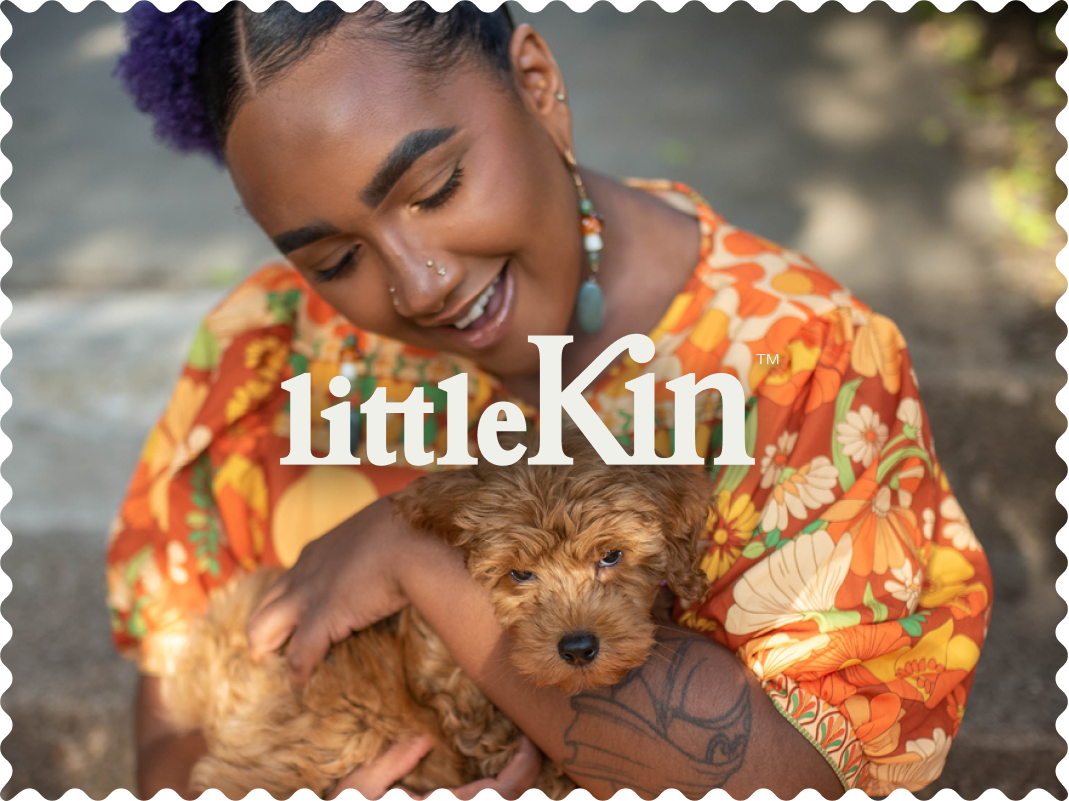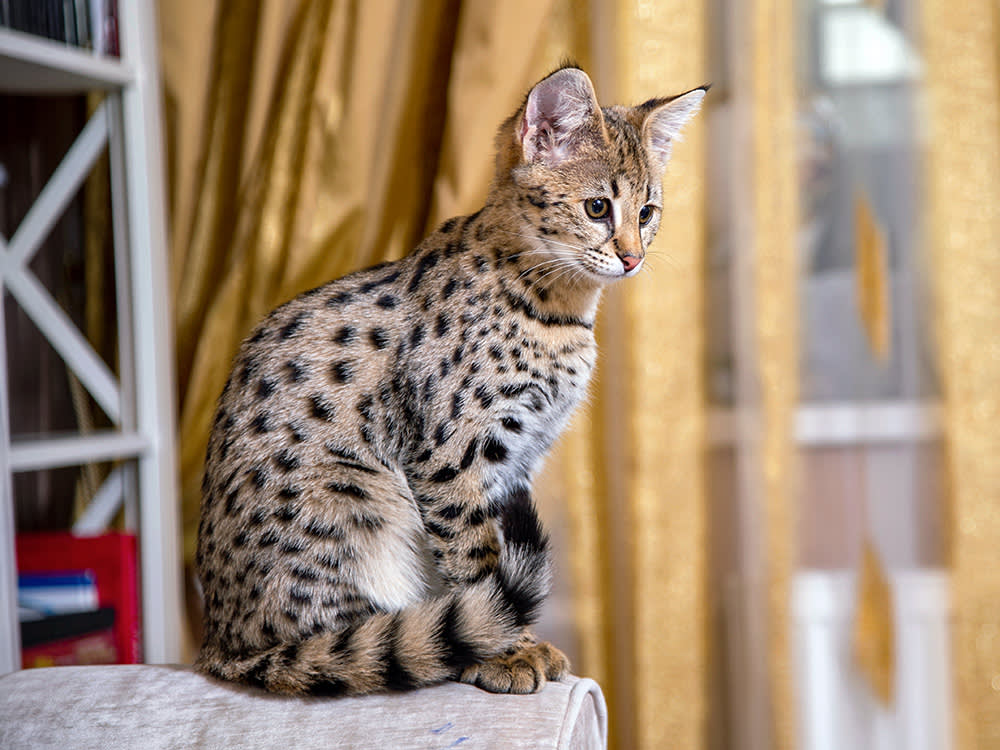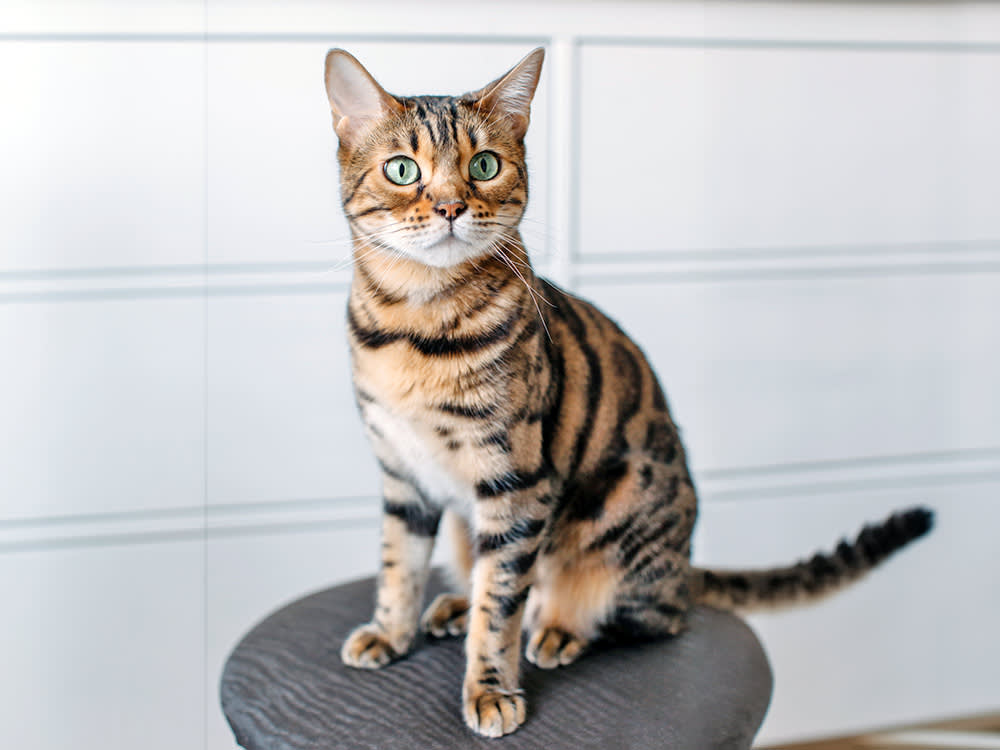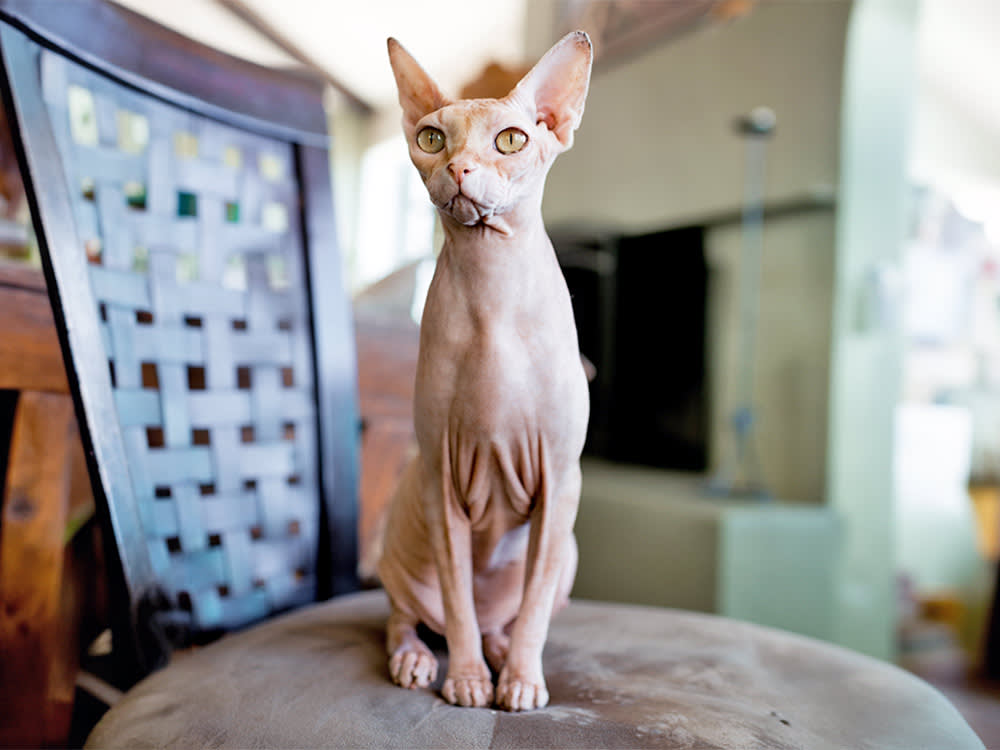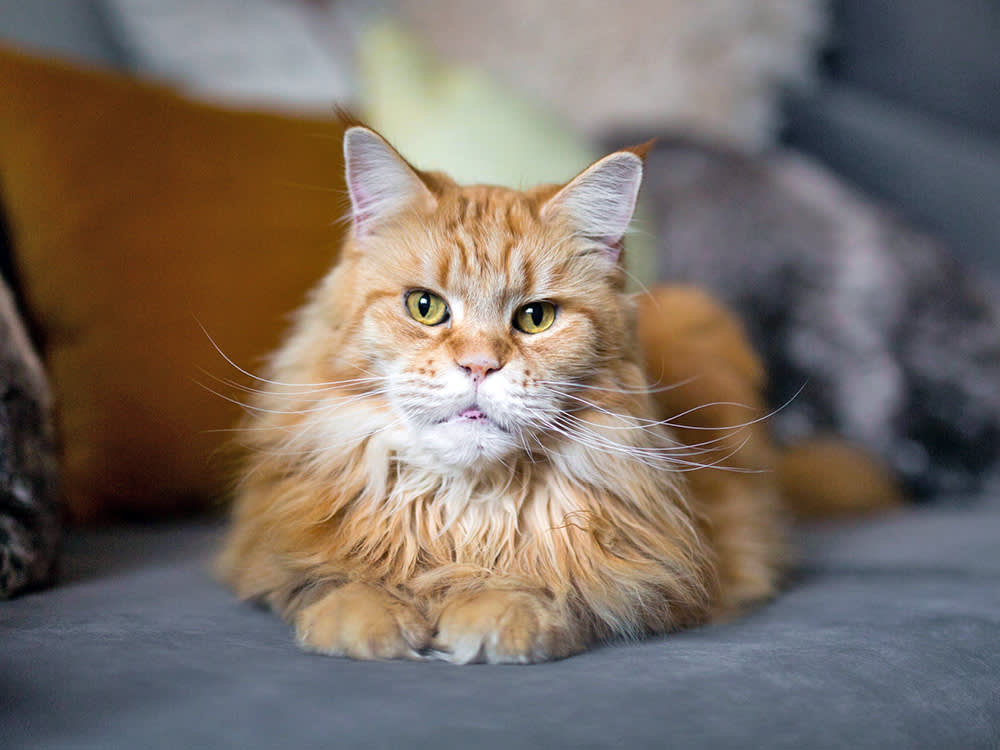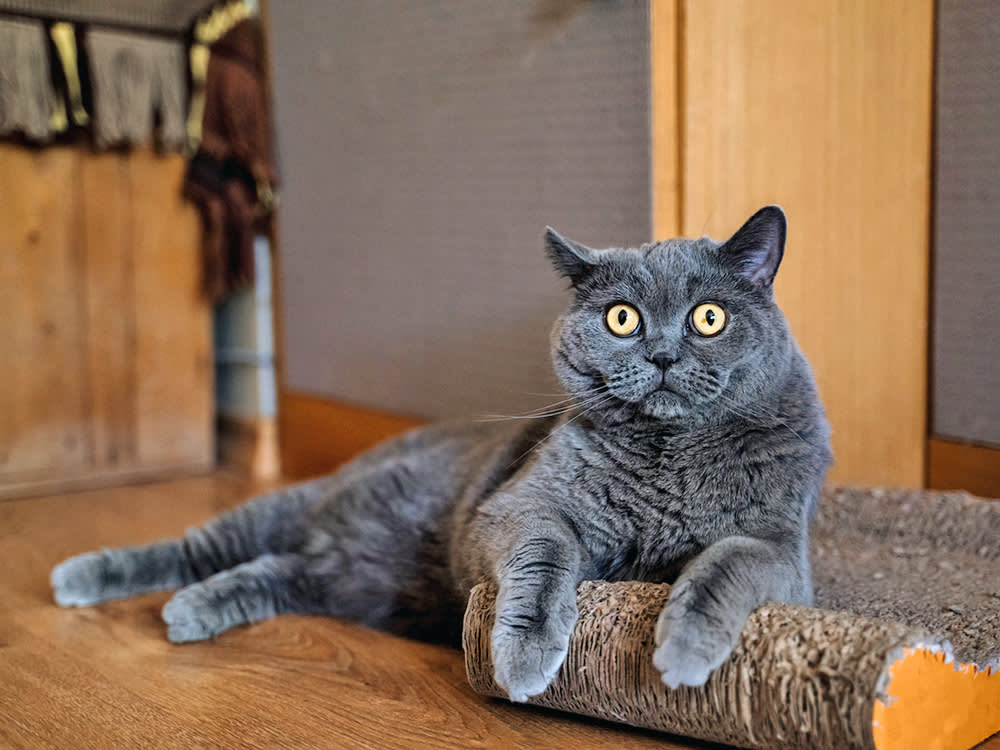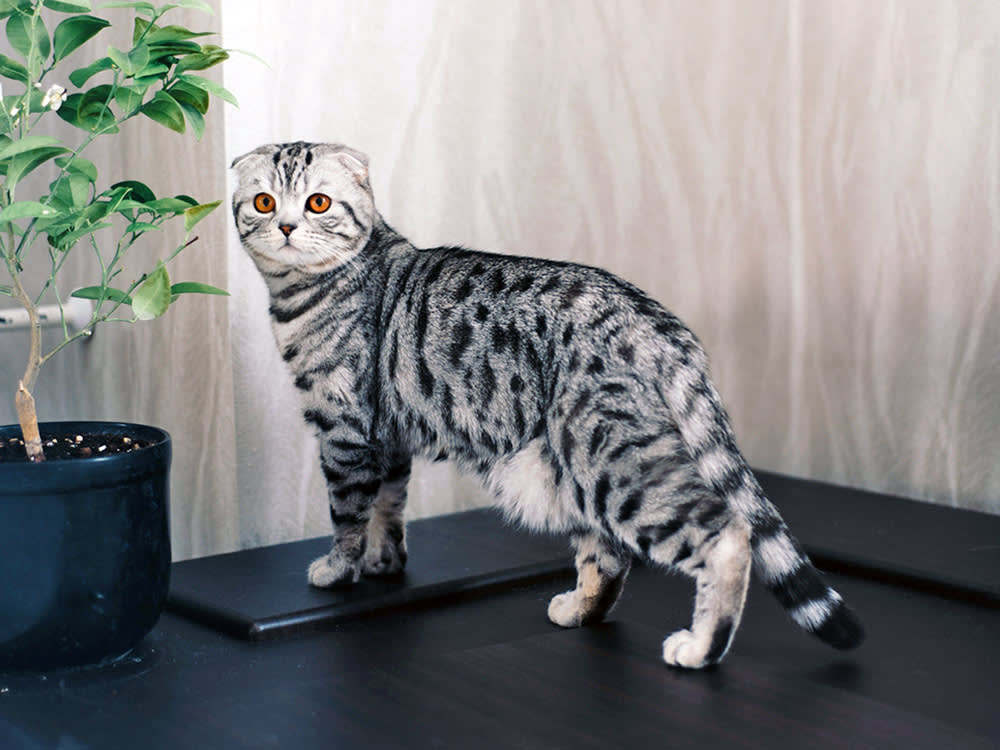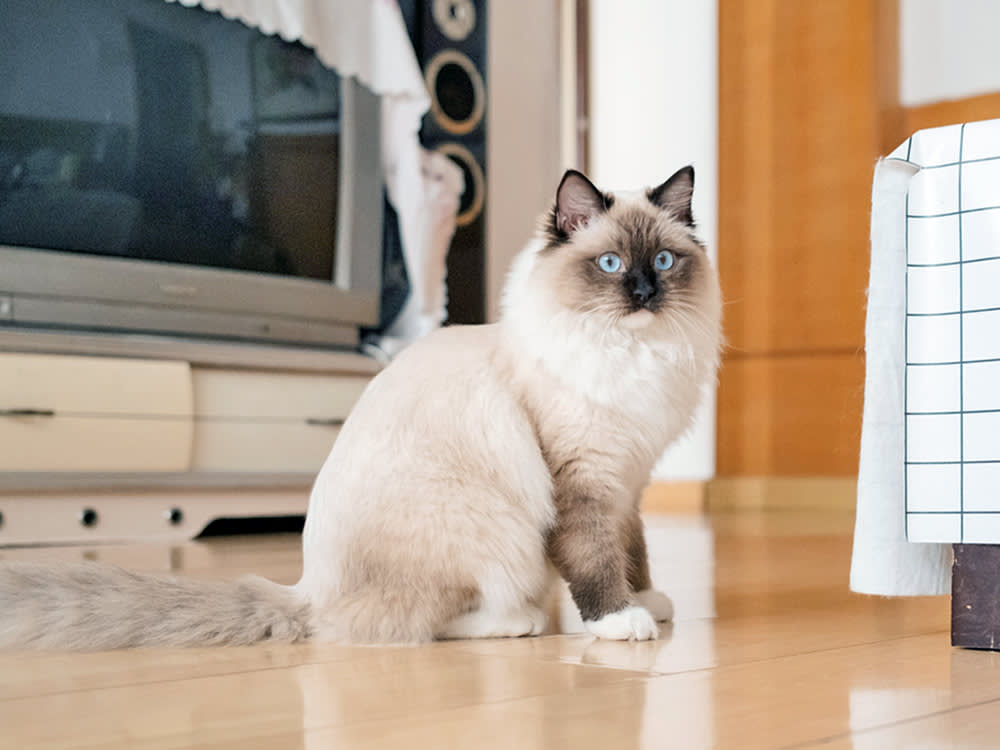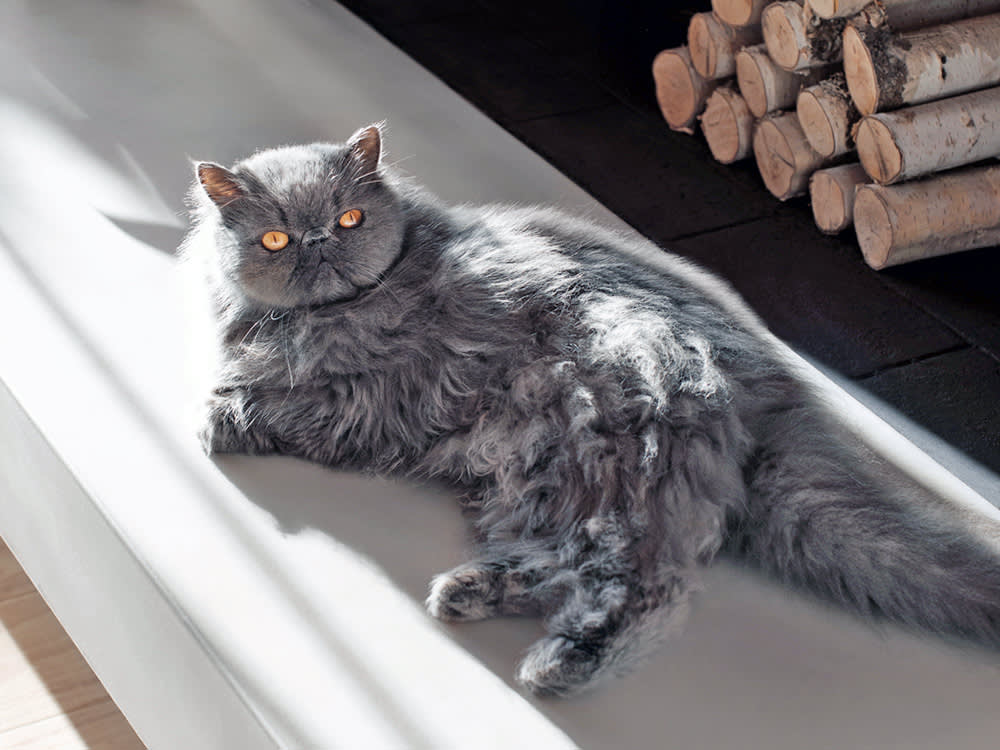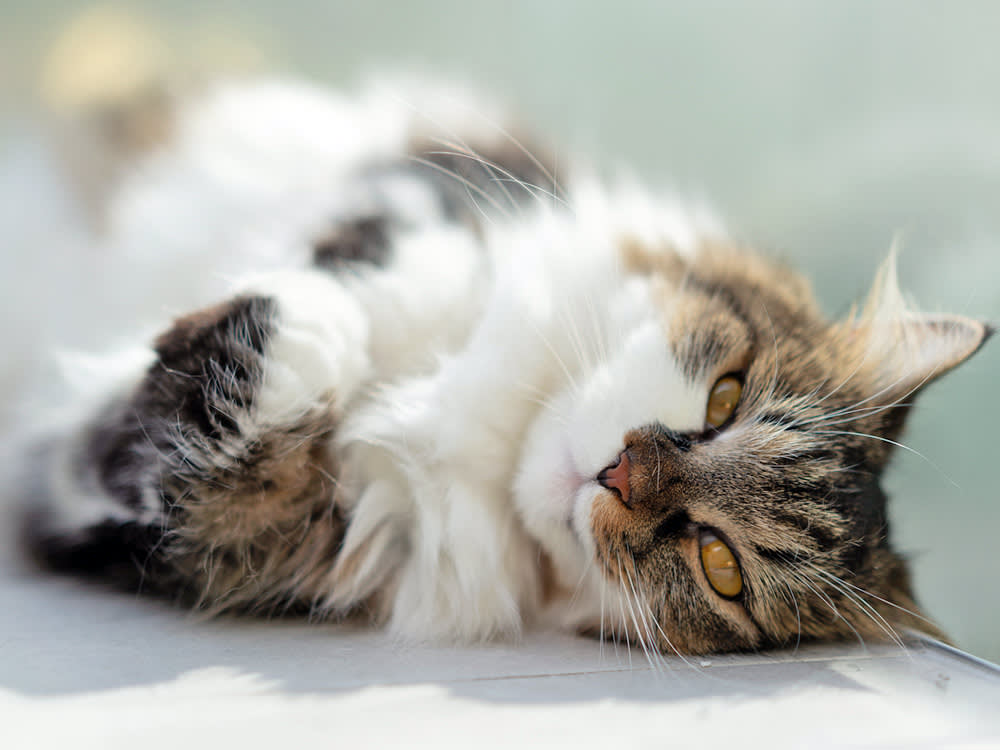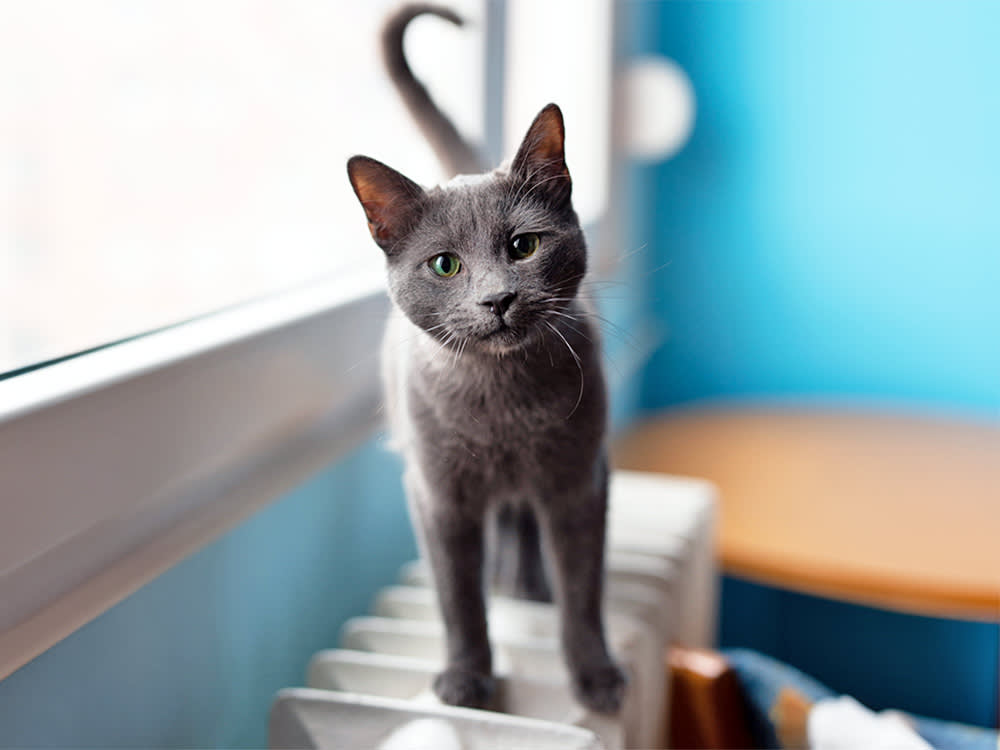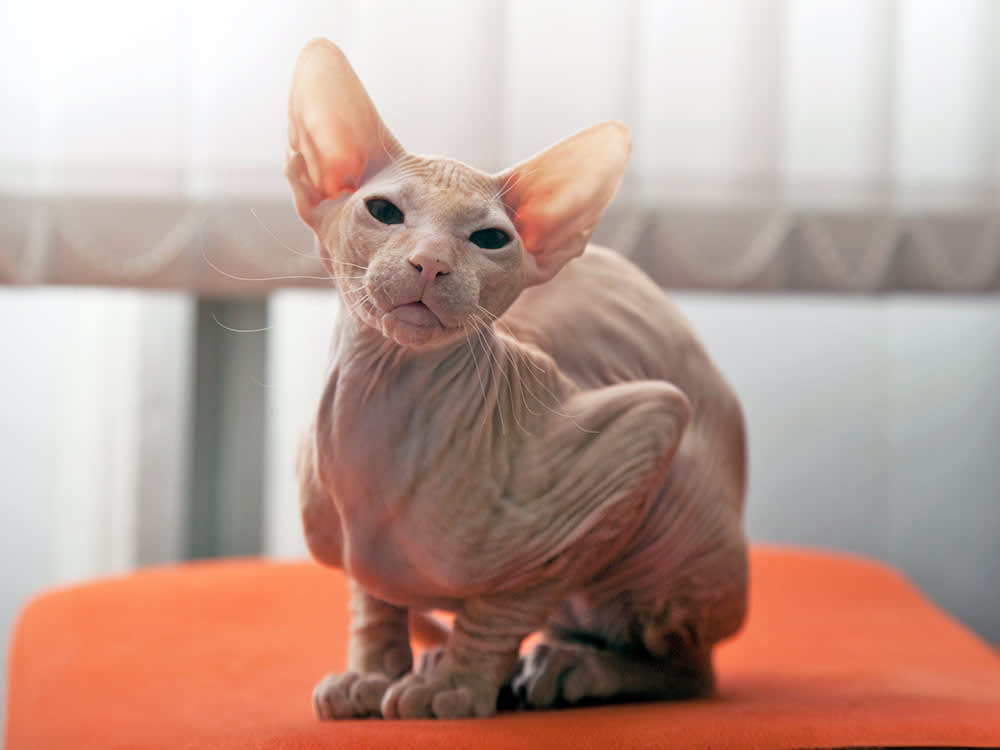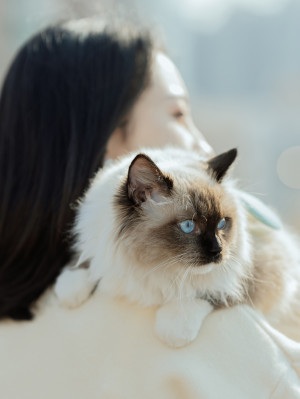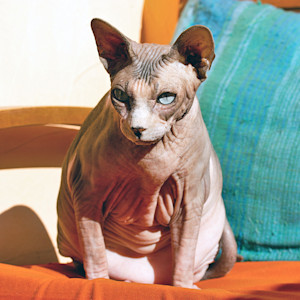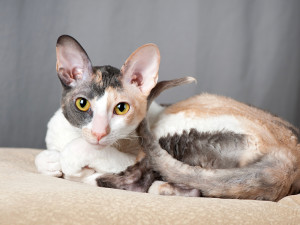From Bengals to Blues: The UK’s Most Expensive Cats Revealed
Meet the felines worth their weight in gold
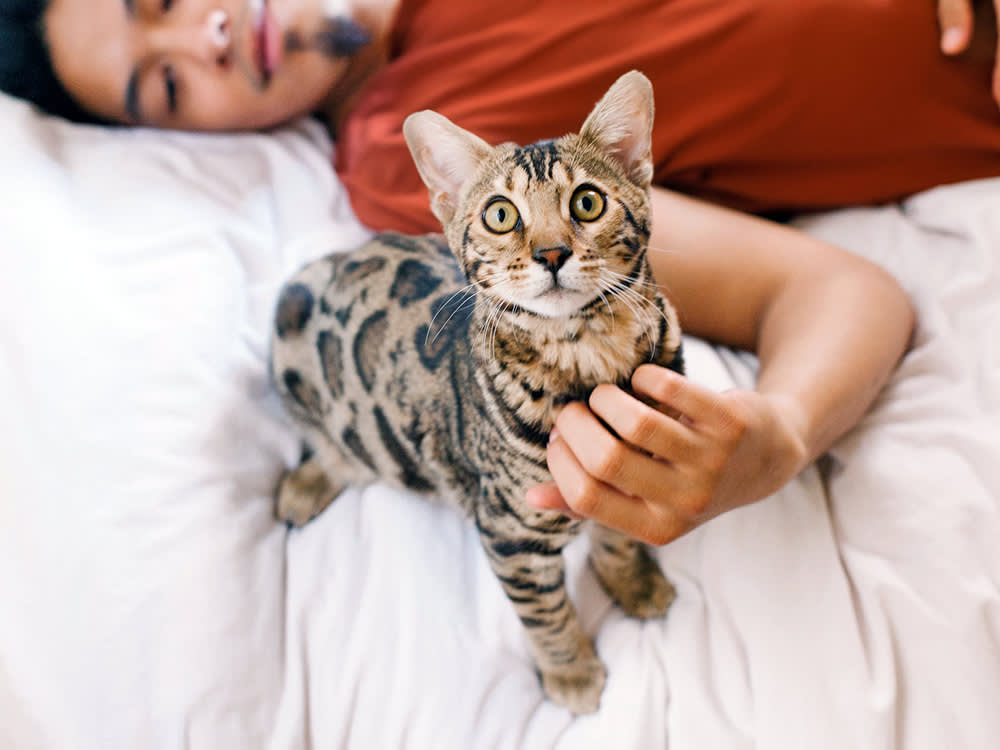
Share Article
In this article:
Savannah Bengal Sphynx Maine Coon British Shorthair Scottish Fold Ragdoll Persian Siberian Russian Blue Peterbald Lykoi Expensive cat breed care How to buy from a reputable breeder
Let’s be honest – every cat owner thinks their feline friend is priceless (and they’re right!). But in the world of pedigree cats, some breeds come with price tags that might make your eyes water. Here’s our roundup of the UK’s most exclusive and expensive cat breeds in 2025.
Remember though, the perfect pet isn’t determined by price or pedigree. The most rewarding feline companionship comes from the unique bond you form with your catopens in new tab, whether they’re a posh pedigree or a rescue moggy.
1. Savannah Cat
The Savannah cat tops the list as the most expensive cat breed in the UK, with first-generation (F1) kittens commanding up to £20,000opens in new tab. These striking cats are hybrids of domestic cats and African Servals, creating exotic-looking felines with wild features.
Savannahs are prized for their spotted coats, remarkable size and dog-like traits including loyalty and trainability. Their rarity contributes to their price – breeding is complex, with early generations having fertility issues and smaller litters. The trend towards exotic-looking cats has certainly contributed to the Savannah breed’s premium status.
Under UK regulationsopens in new tab, early (F1) generations of Savannah cats are subject to additional legal requirements. Under the Dangerous Wild Animals Act 1976, having an F1 Savannah – a direct cross between a Serval and a domestic cat – requires a Dangerous Wild Animal (DWA) licence. This is because F1 Savannahs are considered to retain a significant amount of wild behaviour and physical traits from their Serval ancestors, who are native African predators known for their strength and hunting instincts.
Later generations, such as F2, F3 and F4 Savannahs, are bred with domestic cats and are seen as less wild and do not require a DWA licence. However, concerns remain about the welfare and potential risks associated with hybrid breeding, and some organisations continue to advocate for tighter restrictions or bans on creating exotic-domestic hybrids in the UK.
2. Bengal Cat
The Bengal cat ranks second on our list, with some breeders charging up to £5,000 depending on sub-breedopens in new tab. Created by crossing Asian Leopard Cats with domestic breeds, they feature distinctive spotted or marbled patterns that make them look like tiny leopards.
Bengals are incredibly playful and, unusually for cats, often enjoy water. Their high energy levels make them ideal for active households but mean they require plenty of mental and physical stimulation. The breeding complexity and their popularity among cat lovers has created high demand, driving up prices.
It’s important to note that first-generation (F1) Bengals (the first direct cross between an Asian Leopard Cat and a domestic cat), fall under the Dangerous Wild Animals Act 1976opens in new tab in the UK. Having an F1 Bengal requires a Dangerous Wild Animal (DWA) licence, as these cats retain a significant amount of wild behaviour and characteristics from their leopard cat ancestors.
However, later generations such as F2, F3, and beyond are bred further away from the wild lineage and typically do not require a licence. As with Savannahs, the breeding of early-generation Bengals raises welfare concerns, and some groups advocate for stricter regulations around hybrid breeding practices.
3. Sphynx Cat
The hairless Sphynx cat can cost up to £1,700 in the UKopens in new tab. Despite lacking fur (they actually have fine down that feels like suede), these cats need quite specialised care.
Sphynx cats require regular bathing as their skin produces oils that would normally be absorbed by fur. Their lack of fur makes them vulnerable to temperature changes, requiring protection in both cold and hot weather.
Their popularity stems from their unique appearance and warm personalities – they’re incredibly social cats that bond strongly with their families.
4. Maine Coon
Maine Coons can cost up to £1,500opens in new tab for an adult cat, with championship lines fetching considerably more. These impressive cats are among the largest domestic breeds, with males weighing up to 9kg – that’s a lot of cat to love!
They’re known for tufted ears, lynx-like appearance and luxurious fur in various colours and patterns. Their size and thick coats evolved to survive harsh New England winters, though they seem perfectly content with the milder British climate.
Maine Coons are beloved for their gentle temperaments and intelligence, forming strong bonds while remaining playful into adulthood. Their health conditionsopens in new tab should be considered as part of the long-term cost of ownership, however.
5. British Shorthair
British Shorthairs can cost up to £2,000opens in new tab, with rare-coloured fur commanding premium prices. With round faces, dense coats and stocky builds, they have a ‘Teddy Bear’ appearance that’s hard to resist.
One of Britain’s oldest cat breeds, their ancestry traces back to Roman times. Their popularity soared in Victorian England at early cat shows. While blue (known as grey) remains most recognised, they come in numerous colours.
British Shorthairs are known for being easygoing, affectionate and good with children and other pets. Their calm nature and robust health make them popular investments for many British households.
6. Scottish Fold
Scottish Folds tend to cost up to £1,500opens in new tab in the UK. Their distinctive folded ears give them an owl-like appearance that’s utterly charming.
The breed originated from a natural mutation in a Scottish farm cat in 1961. This mutation affects cartilage, causing forward-folded ears. Breeding requires care, as mating two folded-ear cats can cause skeletal problems – a consideration that emphasises the importance of ethical breeding practices.
Scottish Folds are valued for both their unique appearance and sweet personalities. Prospective pet parents should choose ethical breeders who follow proper breeding guidelines.7. Ragdoll
Ragdolls sell for at least £500opens in new tab in the UK, and sometimes much more. These large, semi-longhaired cats with stunning blue eyes are popular for their beauty and sweet temperaments.
Named for their tendency to go limp when held (like a rag doll!), their docile nature makes them ideal for families. Unlike more independent cats, Ragdolls seek human companionship and love nothing more than being where you are.
Their silky coats come in six patterns with three colourpoints. Despite their long fur, they need minimal grooming as they lack the dense undercoat that causes excessive shedding.
8. Persian Cat
Expect to pay upwards of £400opens in new tab for a Persian cat in the UK. Among the oldest known breeds, they’ve graced homes since the 1600s when imported from Persia to Europe.
With luxurious coats, compact bodies and flat faces, Persians embody feline elegance. Although this upper-echelon appearance requires maintenance – their dense fur needs regular grooming, which is something to consider when budgeting for life with a new petopens in new tab.
Persians have sweet, quiet temperaments. They prefer calm environments where they can lounge comfortably, making them ideal for quieter homes.
9. Siberian Cat
Siberian cats cost at least £350opens in new tab in the UK. Native to Russia, they evolved to withstand harsh winters, developing triple-layered coats and sturdy builds.
Despite their thick fur, they produce less Fel d 1 proteinopens in new tab – the primary allergen affecting cat allergy sufferers – making them potentially suitable for some allergic households.
Siberians are playful, affectionate and intelligent. Their kitten-like playfulness and interactive nature make them valuable companions for UK families looking for an active pet.
10. Russian Blue
A Russian Blue will set you back at least £350opens in new tab in the UK. With silvery-blue coats and mesmerising emerald eyes, they combine beauty with gentle temperaments.
Their dense double coats require minimal grooming and shed very little. Originally from Arkhangelsk, Russia, they were companions to Russian Czars before arriving in the UK during the 19th century.
Their aristocratic heritage shows in their slightly reserved demeanor – deeply loyal to their pet parents but initially a bit shy with strangers. This makes the bond with a Russian Blue all the more special once earned.
11. Peterbald
Peterbald cats typically range from £750 to £1,600 in the UK, depending on lineage and coat type. Originating in Russia in the 1990s, Peterbalds were developed by crossing Oriental Shorthairs with hairless breeds, resulting in elegant, slender cats with various coat types – from completely bald to fine peach-fuzz textures. Their rarity outside of specialist breeders also contributes to their higher price tag.
Their unique appearance, combined with affectionate and intelligent personalities, has earned them a dedicated following among cat enthusiasts. Peterbalds are known for being extremely social, forming deep bonds with their families, and often preferring human or pet companionship over solitude.
Care needs can vary depending on the individual cat’s coat – bald Peterbalds require regular bathing to manage skin oils, similar to the Sphynx. Ensure they stay warm in cooler weather and are protected from excessive sun exposure.
12. Lykoi
Lykoi cats, often referred to as “werewolf cats” due to their distinctive appearance, typically sell for £1,100 in the UK. This pricing reflects their rarity and the careful breeding required to maintain healthy genetic diversity. They are active and curious, often enjoying games that stimulate their hunting instincts.
Despite their wild appearance, Lykois are affectionate, playful and highly intelligent. Their unique coat – ranging from almost fully coated to partially hairless – requires minimal grooming but does need occasional skin care to prevent oil buildup. With their patchy coats, Lykois might need light skin care and warmth in colder months. They love cosy spaces, and a little extra attention keeps their skin comfortable.
Care and maintenance of high-value cat breeds
Expensive breeds often require specialised care beyond the initial purchase price. Many need regular grooming sessions, adding recurring costs. Hairless varieties need bathing and careful temperature management. Breeds with genetic predispositions may require routine veterinary screening.
Pet insurance for premium breeds typically costs more due to their specific risk profiles. If you’re looking to keep costs manageable, check out how to reduce your pet insurance costs.
The relationship between you and your cat is what truly matters in the end. The stories of pets and their peopleopens in new tab remind us that the bond transcends breed or price tag.
How to buy from a reputable cat breeder
Finding a reputable breeder is crucial. Good breeders prioritise health, temperament and breed standards over profit. They welcome your questions, provide health certifications and let you meet at least one parent cat.
Avoid online marketplaces where unethical breeding is unfortunately common. Instead, attend cat shows, contact breed clubs or get recommendations from a vet. Quality breeders will also interview you, genuinely caring where their kittens go.
Consider a cat DNA test to verify breed purity. Be prepared to wait – good breeders don’t mass-produce kittens and often have waiting lists.
Bottom line: the most expensive cat breeds in the UK
The luxury cat world offers remarkable diversity. While the price tags can be eye-watering, the joy and companionship these distinctive cats bring to your home is what matters most.
Before investing in a premium breed, do your homework thoroughly, budget for ongoing care and ensure you can provide the right environment for your chosen breed’s needs. Life with petsopens in new tab is always an adventure, regardless of pedigree!
With proper care and love, these remarkable cats provide years of companionship that many owners would say is worth every penny.
Frequently asked questions: expensive cat breeds
What makes expensive cat breeds so expensive?
Factors include rarity, breeding difficulty, specialised care during breeding, genetic testing, health clearances, show-quality lineage and supply and demand. The more challenging to produce or limited the breeding population, the higher the price tends to be.
What’s the most expensive cat in the UK?
The Savannah cat, particularly F1 generation (with a Serval parent), is the most expensive breed in the UK, with cats costing up to £20,000. This reflects both their rarity and the specialised breeding requirements. Under UK legislation, F1 (first-generation) Savannah cats can only be kept with a DWA licence.
What is the best selling cat in the UK?
British Shorthairs, Ragdolls and Maine Coonsopens in new tab rank among the UK’s most popular pedigrees (by number of GCCF registrations), though crossbreeds and domestic shorthairs remain most common due to wider availability and lower cost.
What is the most sought after cat breed?
British Shorthairs, Bengals, Siberians and Maine Coons were the top four most popular cat breeds in the UK at the end of 2024, according to a YouGov pollopens in new tab. This was based on the percentage of people who have a positive opinion of the cat breeds.
Resources
“Analysis of Breeds Registered - the Governing Council of the Cat Fancy.opens in new tab” The Governing Council of the Cat Fancy, 16 Feb. 2023.
Corney, Charlotte. “Savannah Cats as Pets: The Growing Trend for Keeping Hybrid Cats.opens in new tab” discoverwildlife.com, 22 Jan. 2024.
GOV.UK. “The Dangerous Wild Animals Act 1976opens in new tab (Modification) (No.2) Order 2007.” Legislation.gov.uk, 2011.
Sartore, Stefano, et al. “Polymorphism Analysis of Ch1 and Ch2 Genes in the Siberian Cat.opens in new tab” Veterinary Sciences, edited by Patrick Butaye, vol. 4, no. 4, Dec. 2017, p. 63. Accessed 28 Mar. 2025.
“The Most Popular Cat Breeds in the UK | Society | YouGov Ratings.opens in new tab” Yougov.co.uk, 2024. Accessed 28 Mar. 2025.
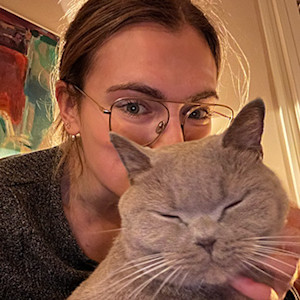
Natalie Gil
Natalie Gil is a freelance journalist who has written for iNews, the Irish Independent, Stylist and more. She previously worked at Refinery29, Monzo and the Guardian, and is the proud cat mum of British Shorthairs Prune and Oat.
Related articles
![Dark-haired woman holding her ragdoll cat]()
7 Purebred Cat Breeds Likely to Suffer from Genetic Disorders
And why this means adopting a cat from a rescue centre could be a better choice
![Sphynx cat]()
‘XL Bully Cat’ Breed Trend Sparks Outrage As Experts Warn of Severe Health Risks
Experts say this AI-like breeding trend is susceptible to serious health issues
Are XL Bully Cats Dangerous?
XL Bully cats might appear tough and muscly, but are they actually dangerous?
![Cornish Rex cat laying down on a pillow]()
The Cat Breed-Behaviour Connection
Which cats are more likely to have stranger danger? Bite the hand that feeds them? Get the zoomies? Scientists studied 5,700 pet cats and discovered some interesting traits
